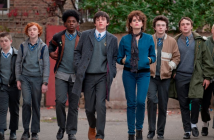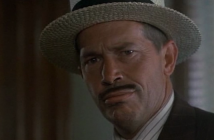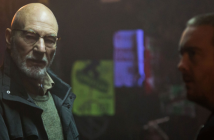Editor’s Note: Drunk Stoned Brilliant Dead: The Story of the National Lampoon opens October 2nd in Toronto at The Bloor Hot Docs Cinema.
For those of us too young to have experienced it — or too wasted to remember — Douglas Tirola’s Drunk Stoned Brilliant Dead: The Story of the National Lampoon gives a terrific overview of the heyday of The National Lampoon magazine and its enormous influence on film, satire and the culture overall. Lampoon found and writer Doug Kenney provides the focal point for a story that starts at the very end of the 1960s, and involves dozens of actors, writers, artists and comedians. Interviews with Henry Beard, Anne Beatts, Tony Hendra and many more are accompanied by archival illustrations from the magazine, slightly animated in that goofy way that’s so popular nowadays, and often changed to reflect current interviews and the anecdotes being told.
The film assumes its audience has as short an attention span as the readers of the magazine had.
It’s all very peppy and exciting, but there’s a downside to the film’s exuberance, primarily in its insistence on cramming as many covers, cartoons, features and photographs into its 98-minute runtime as possible. It’s pretty easy to figure out who’s dead by who doesn’t show up in the interviews, for instance, given they’re mostly a series tightly packed soundbites. The film assumes its audience has as short an attention span as the readers of the magazine had.
 The National Lampoon was undoubtedly one of the most influential cultural media outlets of its time, and with all the good and impressive things that status brings, there are also the negatives. Like Caddyshack (1980), not officially a Lampoon film but so close as to make no odds, The Lampoon was always a mix of the puerile and the intellectual, the silly and the topical, the satirical and the absurd, and always had a good heart underneath… as long as you were a white, straight male of a certain socioeconomic status. The film doesn’t flinch from that criticism, and along with the usual shrugging excuse that satire is supposed to be offensive (hilariously implying that something offensive is, therefore, naturally satirical) is a clip of Doug Kenney in the 1970s saying without reservation that most of the staff were “unbelievable racists.”
The National Lampoon was undoubtedly one of the most influential cultural media outlets of its time, and with all the good and impressive things that status brings, there are also the negatives. Like Caddyshack (1980), not officially a Lampoon film but so close as to make no odds, The Lampoon was always a mix of the puerile and the intellectual, the silly and the topical, the satirical and the absurd, and always had a good heart underneath… as long as you were a white, straight male of a certain socioeconomic status. The film doesn’t flinch from that criticism, and along with the usual shrugging excuse that satire is supposed to be offensive (hilariously implying that something offensive is, therefore, naturally satirical) is a clip of Doug Kenney in the 1970s saying without reservation that most of the staff were “unbelievable racists.”
On the surface, Drunk Stoned Brilliant Dead seems to leave the topic at that, but moments later, somewhat slyly, is the mention of “Magical Misery Tour,” a song from Lampoon’s first album and a send-up of John Lennon’s infamous 1970 interview with Rolling Stone, the one where he regretted having not punched a couple of his fellow Beatles in the face, and hoped aloud a song of his wouldn’t be liked by “tarts or fags.” The next Lampoon album a year later seemed to be agreeing with Lennon’s self-satisfied, somewhat anti-social sentiments, however, and no one seems to have noticed the contradiction.
Still, there’s a distinct hollowness to the film, the feeling that, no matter how deeply you delved into the many lives that came and went from the offices of The National Lampoon, you’d never truly get to the bottom of the legend. . .
Well, the film noticed. It also noticed former Lampoon staffers say they were satirists with important roles in society one minute, then once things got rough, protest with a slight whine in their voices that they were just trying to have fun, all this serious stuff that happened wasn’t fair. Nothing is said outright, of course, but it’s no accident that Drunk Stoned Brilliant Dead pieces the story together in just this way, surely hoping that the audience is pickin’ up what they’re puttin’ down.
Still, there’s a distinct hollowness to the film, the feeling that, no matter how deeply you delved into the many lives that came and went from the offices of The National Lampoon, you’d never truly get to the bottom of the legend, because there never was much of a legend to begin with. Rather, the Lampoon was exactly what you’d expect to get after the happy convergence of a lot of very talented people, and no matter how many classic 1970s rock tunes with a sentimental overtone Drunk Stoned Brilliant Dead crams into its soundtrack, it can’t hide the fact that The National Lampoon was, at heart, just a business, not a kind of mystical alignment of the stars that changed the world forever.
A solid overview of the heyday of The National Lampoon, Drunk Stoned Brilliant Dead avoids the tougher topics, preferring to skim the surface by cramming as much archival material as possible into the film.




Pingback: get fast followers for free()
Pingback: https://www.facebook.com/flatratecomputerservice/()
Pingback: Manifestation Miracle Reviews()
Pingback: webcam model worden()
Pingback: guitar picks()
Pingback: how to get free netflix 2016()
Pingback: opensky coupon code()
Pingback: greenwriting()
Pingback: recycle clothes for cash()
Pingback: slickdeals()
Pingback: chapter 13 bankruptcy york()
Pingback: raspberry ketone lean reviews()
Pingback: porno()
Pingback: esta()
Pingback: Pearle()
Pingback: visit the website()
Pingback: top article()
Pingback: Palmer Otting()
Pingback: ecograf Doppler()
Pingback: Best buy bulk order smartphone accessories()
Pingback: curso de detetive particular profissional()
Pingback: paintless dent repair training()
Pingback: dr medora clinic()
Pingback: movie2k()
Pingback: bikiniluxe review()
Pingback: ramalan bintang scorpio()
Pingback: puppy playpen()
Pingback: High pr links()
Pingback: Marva Moline()
Pingback: Brand Bangla Eshop()
Pingback: Shells()
Pingback: PREMIUM PROMOTIONS ON EXCLUSIVE CLUB CASINO()
Pingback: seo minneapolis()
Pingback: ebay 3ds()
Pingback: Escort()
Pingback: free instagram followers app()
Pingback: top th9 war base()
Pingback: http://torrent-plus.ru/user/fxqsnvi/()
Pingback: how to make iphone anallication()
Pingback: th8 war base layout()
Pingback: sacred 3 trainer()
Pingback: Schluesseldienst Berlin()
Pingback: weight loss success()
Pingback: history of names irish()
Pingback: news()
Pingback: content management consulting()
Pingback: tenerife blog()
Pingback: check my site()
Pingback: stlpiky()
Pingback: Tamatha Downen()
Pingback: Adele()
Pingback: boom beach unlimited diamonds()
Pingback: Facebook Unfriend()
Pingback: movietube()
Pingback: hungry shark mod()
Pingback: guitar picks()
Pingback: corporate training in singapore()
Pingback: birthday party planner()
Pingback: british used clothing()
Pingback: antispam e.v.()
Pingback: agencia publicidad malaga()
Pingback: water jug dispenser glass()
Pingback: android()
Pingback: Debarpan Mukherjee()
Pingback: Anika()
Pingback: top notch cat kennel()
Pingback: naples best pet sitter()
Pingback: video()
Pingback: Microcapmagazine()
Pingback: take home pay calculator()
Pingback: free porn()
Pingback: garcinia cambogia 60 percent()
Pingback: seat-crack wedges()
Pingback: Vehicle GPS Tracker()
Pingback: webkinz()
Pingback: how to make extra money online()
Pingback: Angeline()
Pingback: ollas rena ware()
Pingback: chapter 13 attorney hershey()
Pingback: nose hair trimmer rite aid()
Pingback: serviporno()
Pingback: Cash 4 Clothes()
Pingback: punta cana queda en()
Pingback: IATA Pet Carrier in Sri Lanka()
Pingback: tenerife estate agents()
Pingback: landscape design Canberra()
Pingback: Castellana()
Pingback: tenerife forum()
Pingback: australias worst bank()
Pingback: Kristina()
Pingback: roasting pan for convection oven()
Pingback: free xbox live redeem codes 2013()
Pingback: fly swatter music game()
Pingback: third party light zippy()
Pingback: moving help()
Pingback: best mattresses 2016()
Pingback: office caddy organizer()
Pingback: cat boarding naples()
Pingback: Bad Lawyer Robert G. Creely lawyer()
Pingback: free messenger guide()
Pingback: best netflix free trial()
Pingback: java courses in niit pune()
Pingback: howrse hack()
Pingback: Gym Shorts()
Pingback: light disco party()
Pingback: SuperGaminator Bonus()
Pingback: chwil�wki online()
Pingback: porno()
Pingback: Desi Photographer()
Pingback: Rosalia()
Pingback: greatest pet sitter in naples fl()
Pingback: http://keepyourhair.cba.pl/()
Pingback: dog walking naples fl()
Pingback: Startups in Hyderabad()
Pingback: InstallShield()
Pingback: porno()
Pingback: porno()
Pingback: how to get ex back if he hates you()
Pingback: porno()
Pingback: porno()
Pingback: in home cat sitter in naples()
Pingback: Best drones for sale()
Pingback: skinny fiber()
Pingback: http://www.raspberry-ketones.org/()
Pingback: dog sitter naples fl()
Pingback: Find Out More()
Pingback: jew jokes()
Pingback: china proxies list()
Pingback: at here()
Pingback: read the full info here()
Pingback: candy saga()
Pingback: This Site()
Pingback: Obsession Phrases Examples()
Pingback: printingvip.com()
Pingback: chlamydia()
Pingback: http://sedotwcsurabaya.livejournal.com/()
Pingback: https://www.youtube.com/user/tijuanthedon1()
Pingback: browse this link()
Pingback: http://www.cityprodentists.com/dental-implants-stoke-on-trent/()
Pingback: Medix College Reviews()
Pingback: android game cheat engine()
Pingback: Medix College Reviews()
Pingback: youramateurporn.downloadmovie.win()
Pingback: Kamagra()
Pingback: patio sets()
Pingback: riparazione iphone()
Pingback: Long Island Lice removal()
Pingback: sleeping pills()
Pingback: riparazione iphone roma()
Pingback: alopecia areata()
Pingback: mrvids.lasab.pw()
Pingback: piante online()
Pingback: edarling()
Pingback: seo rank services()
Pingback: spearguns()
Pingback: seo()
Pingback: http://www.christiantshirts.co/()
Pingback: alive air purifier()
Pingback: send earnings()
Pingback: puno bus()